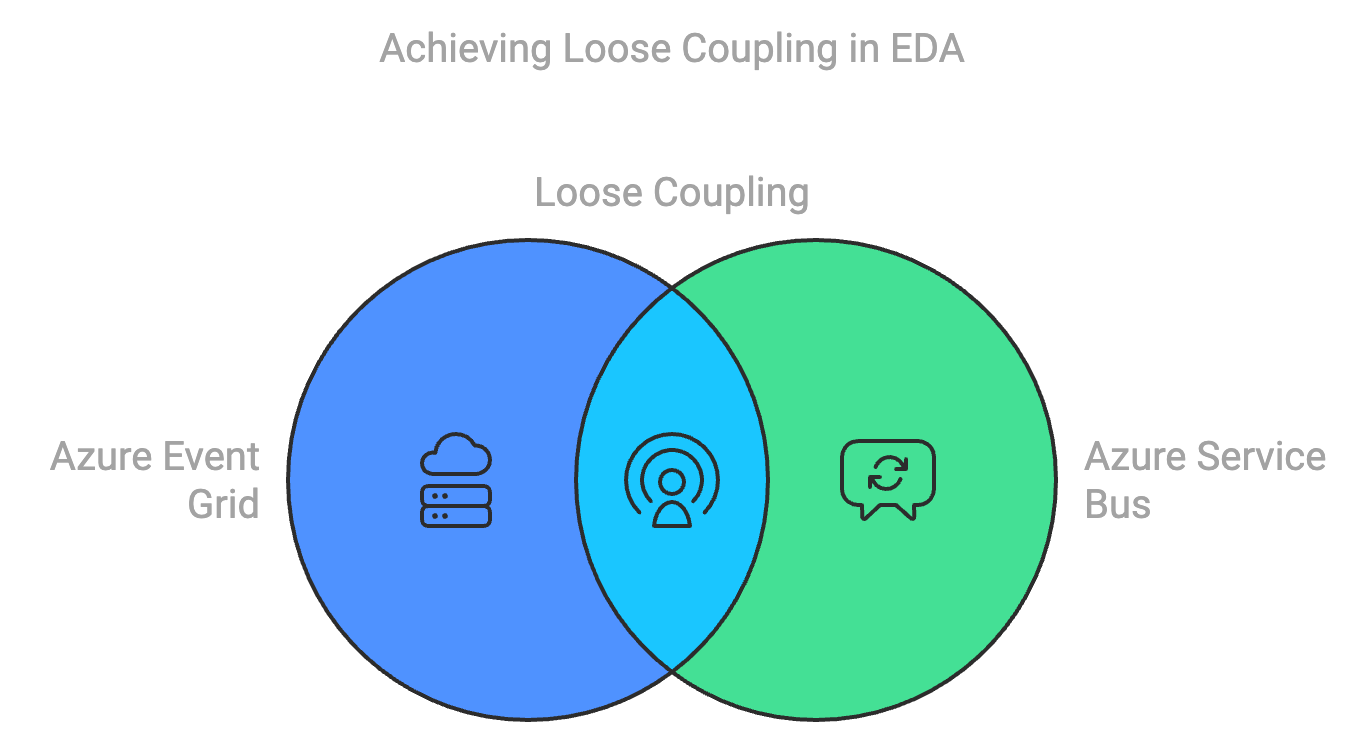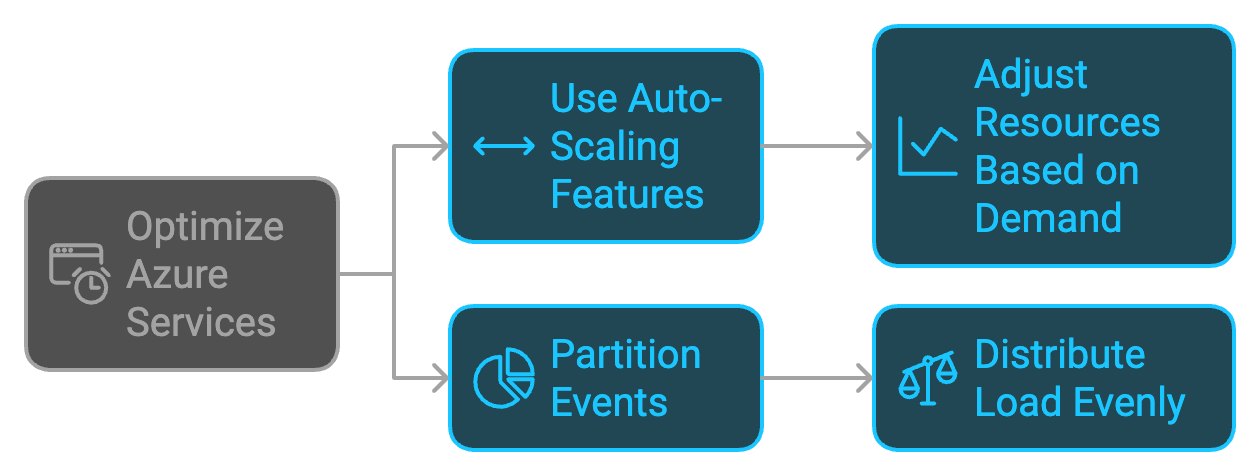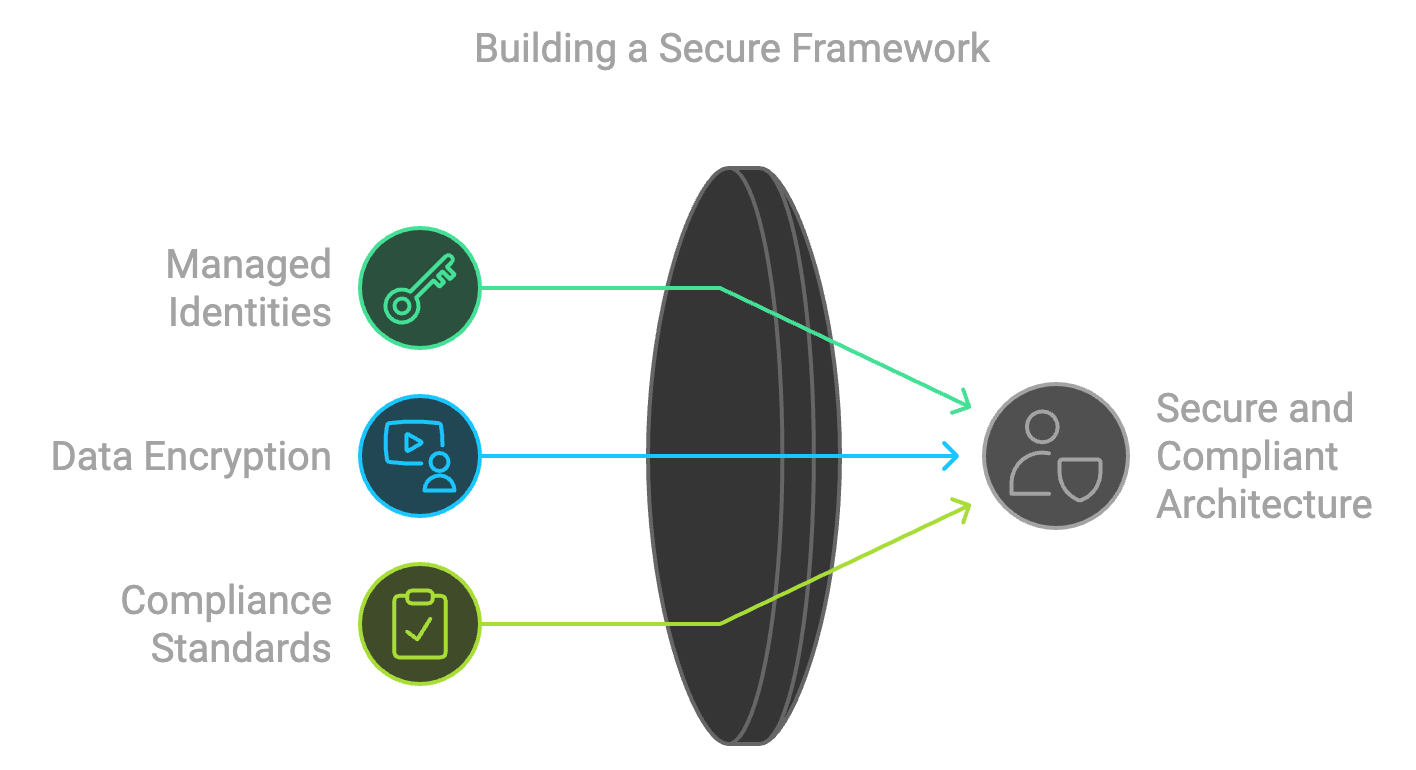Designing a scalable Event-Driven Architecture (EDA) on Azure requires careful planning and adherence to proven best practices. For technical managers aiming to optimize their systems, understanding these practices is crucial for building efficient and resilient applications.
This article outlines key best practices for designing scalable EDAs on Azure, providing insights to help your team make informed decisions.
1. Embrace Loose Coupling

Loose coupling between components is fundamental to scalability in EDA. By ensuring that event producers and consumers operate independently, you can develop, deploy, and scale each component without affecting others.
- Use Azure Event Grid or Service Bus: These services facilitate decoupling by acting as intermediaries between producers and consumers.
- Design for Independence: Avoid direct dependencies between services; communicate solely through events.
Loose coupling enhances flexibility, making it easier to update and scale individual components as needed.
2. Implement Asynchronous Communication

Asynchronous communication allows your system to handle events without blocking processes, improving performance and scalability.
- Leverage Azure Functions: Use serverless functions to process events asynchronously.
- Avoid Blocking Calls: Design services to operate independently of the event processing outcome.
Asynchronous processing ensures that event producers remain responsive, even when consumers are busy or unavailable.
3. Prioritize Scalability from the Start

Design your architecture with scalability in mind to handle increased workloads efficiently.
- Use Auto-Scaling Features: Azure services like Event Hubs and Functions offer automatic scaling based on demand.
- Partition Events: Implement partitioning strategies to distribute load evenly across consumers.
Planning for scalability from the beginning prevents bottlenecks and ensures consistent performance under heavy loads.
4. Ensure Reliable Messaging

Reliable messaging guarantees that events are delivered and processed correctly, which is vital for system integrity.
- Enable Retries and Dead-Letter Queues: Use Azure Service Bus features to handle transient failures and undeliverable messages.
- Implement Idempotent Consumers: Design consumers to handle duplicate events without adverse effects.
Reliable messaging safeguards your system against data loss and inconsistencies.
5. Incorporate Robust Monitoring and Logging

Effective monitoring and logging are essential for maintaining system health and diagnosing issues promptly.
- Utilize Azure Monitor: Track metrics and set up alerts for critical thresholds.
- Implement Structured Logging: Use consistent log formats to facilitate analysis and troubleshooting.
Proactive monitoring enables your team to identify and resolve issues before they impact users.
6. Design for Security and Compliance

Security should be integrated into every aspect of your architecture to protect data and meet regulatory requirements.
- Use Managed Identities: Securely manage access to Azure resources without hard-coding credentials.
- Encrypt Data: Ensure data is encrypted both at rest and in transit.
- Follow Compliance Standards: Adhere to industry regulations relevant to your application.
A secure architecture builds trust with users and protects your organization’s reputation.
7. Optimize for Cost Efficiency

Designing with cost in mind ensures that your architecture remains sustainable as it scales.
- Leverage Serverless Options: Use Azure Functions to reduce infrastructure costs by paying only for compute resources used.
- Monitor Resource Utilization: Regularly review usage patterns and adjust resources accordingly.
Cost optimization allows your organization to allocate resources more effectively.
8. Facilitate Team Collaboration and Knowledge Sharing

A well-informed team can design and maintain a more effective architecture.
- Document Your Architecture: Maintain up-to-date documentation for reference.
- Encourage Knowledge Transfer: Integrate developers with specialized expertise to enhance your team’s capabilities.
Collaboration and shared understanding contribute to a more robust and maintainable system.
How Synergy Sparq’s Developers Can Enhance Your Team
Implementing these best practices effectively often requires specialized expertise. Synergy Sparq provides skilled Azure developers who can integrate with your team, bringing valuable knowledge and experience.
- Expertise in Azure Services: Our developers are proficient in leveraging Azure’s event-driven services to design scalable architectures.
- Practical Experience: They have hands-on experience implementing best practices in real-world projects.
- Seamless Integration: Working alongside your team, they contribute to your projects while fostering knowledge transfer.
Integrating developers from Synergy Sparq can accelerate your project’s success and enhance your team’s proficiency.
Conclusion
Designing a scalable Event-Driven Architecture on Azure involves careful consideration of various best practices, from embracing loose coupling to ensuring robust security. By applying these principles, your team can build applications that are efficient, resilient, and prepared for growth.
Integrating skilled developers from Synergy Sparq can provide the expertise needed to implement these best practices effectively, enhancing your team’s capabilities and contributing to your project’s success.
Next Steps
If you’re looking to optimize your Event-Driven Architecture on Azure, consider augmenting your team with developers from Synergy Sparq. Contact us to learn how we can support your goals.






